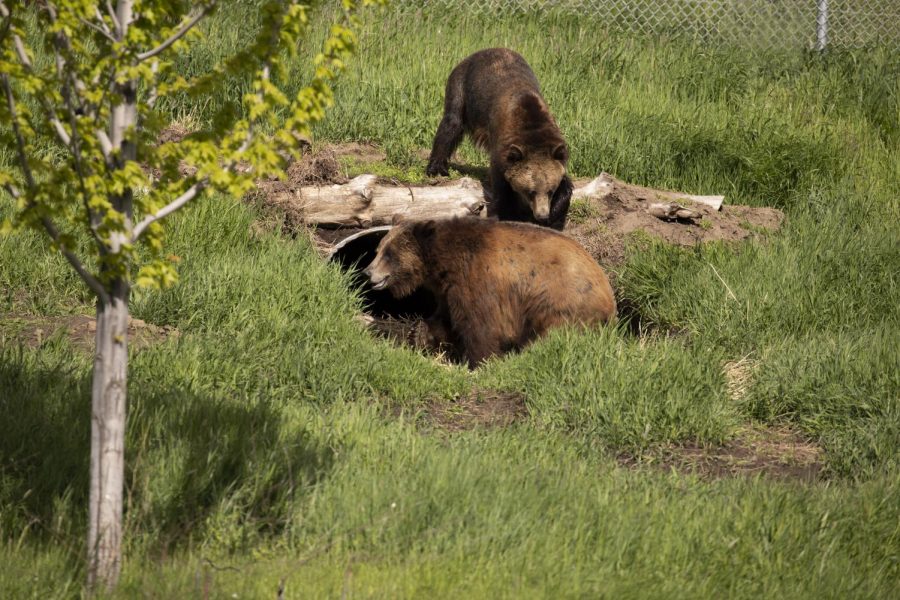WSU’s Bear Center builds new cave
Bears will use cave to sleep more in fall; tunnel is buried in outdoor yard hillside
There are 11 bears at WSU’s Bear Center. They were given a new cave, which researchers say will be used as hibernation approaches.
June 5, 2020
The 11 bears currently living at WSU’s Bear Center have a new cave to explore in their outdoor yard.
The cave is made out of a 10-foot-long culvert, or round metal tunnel, that has been compressed to make it flat on the top and bottom so it is more comfortable for the bears to lay in, said Facility Manager Brandon Hutzenbiler. The culvert is buried in the hillside of the bears’ outdoor yard and there is a metal plate welded to the back so they cannot dig out the back.
After the culvert was installed, the area was fenced off for about a month so the bears would not disturb the freshly turned dirt, he said. The bears have had access to the cave since about mid-May.
The cave cost about $2,000 to build, Hutzenbiler said. The funding came from an anonymous donor who regularly gives money to the center.
“The bears can feel like they have a place that acts like a den where they can get away from other bears or maybe from the public … and kind of have a place to hang out,” Hutzenbiler said.
About two bears can fit in the cave at a time, Hutzenbiler said.
The bears have been exploring the cave since it was finished and made sure it was not a trap, he said. They lay at the opening but have not rested completely inside the cave yet.
“Anything that’s different … they treat with some suspicion,” Hutzenbiler said.
Charles Robbins, ecology professor at WSU’s School of Biological Sciences, wrote in an email that bears are always afraid of new things. It will take time for them to realize the cave is a cool and quiet place to sleep.
The cave is not being used for any research purposes and is purely for the bears’ enrichment, Robbins said.
Hutzenbiler said bears normally dig dens in the fall when they start to have a hibernation drive. Right now is the peak of their active season, so the bears are likely to be walking around the yard and searching for food, instead of using dens.
“It’s less likely that we’ll see them out there just laying inside of it right now,” Hutzenbiler said. “Versus later on in the fall when they’re feeling fat and want to be more lazy.”
The bears sometimes dig “belly beds,” which are shallow holes in the ground to lay in during the day, he said.
“For the most part, we let them do their thing and landscape the yard as they see fit,” Hutzenbiler said.
He said the bears are separated into three groups for yard time. They rotate the groups for yard time around 3:15 p.m. each day, which is a good time for visitors to ask questions to staff or see the bears eat food from puzzle feeders.











